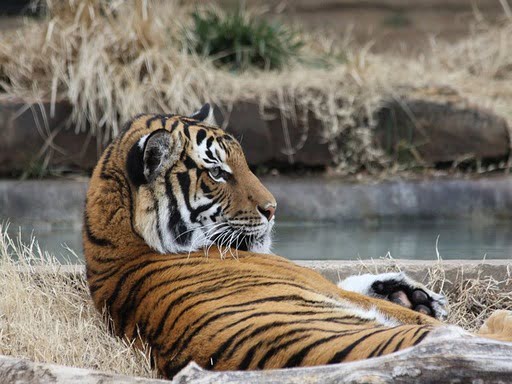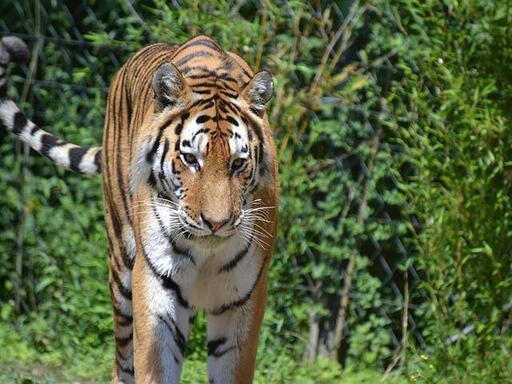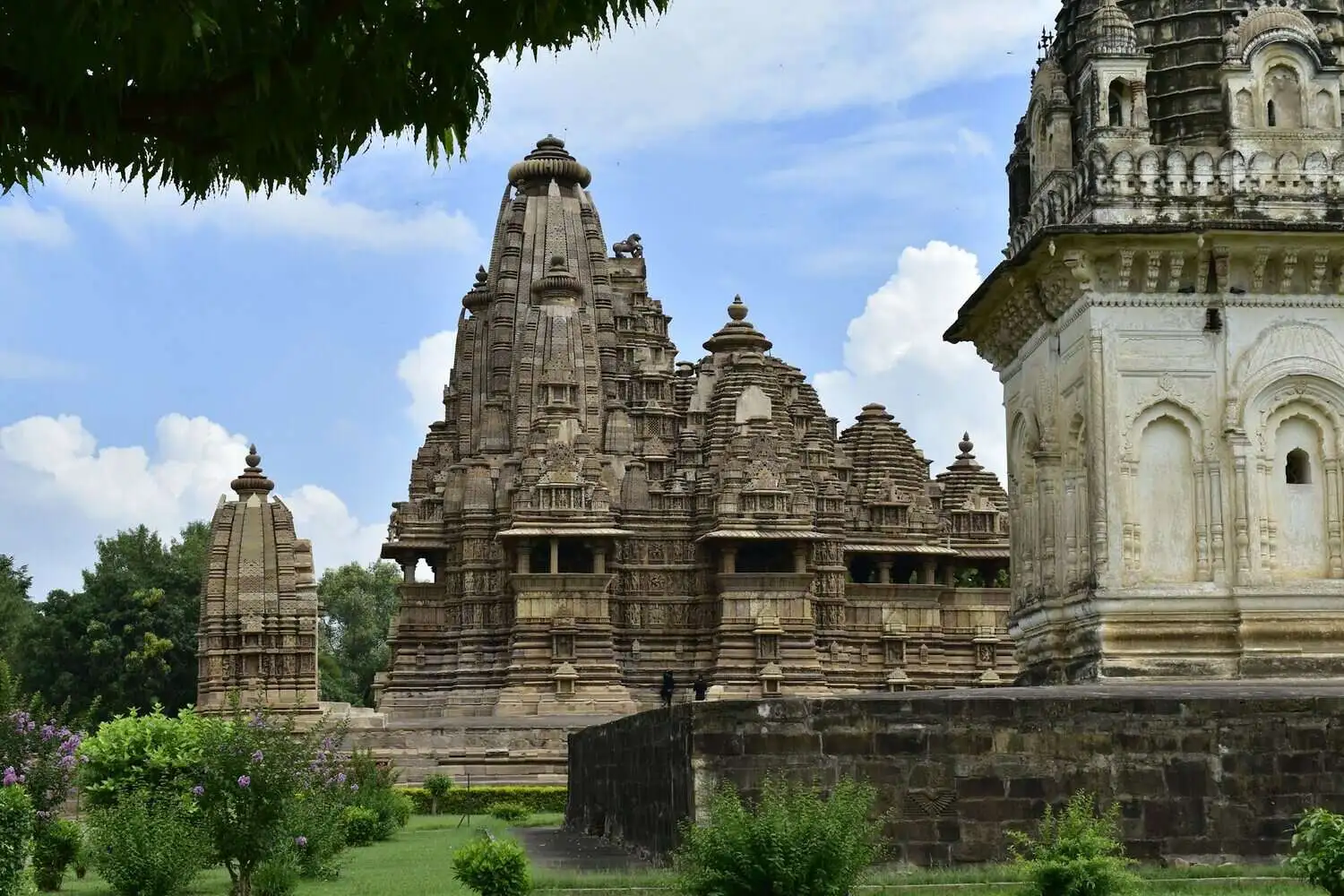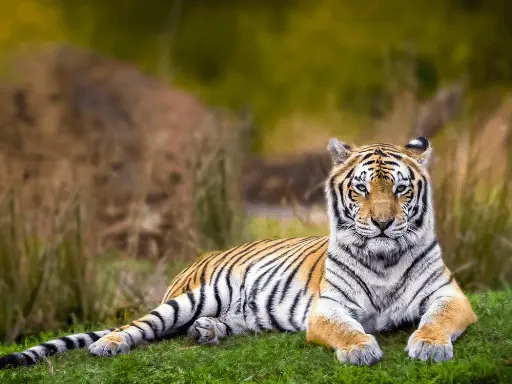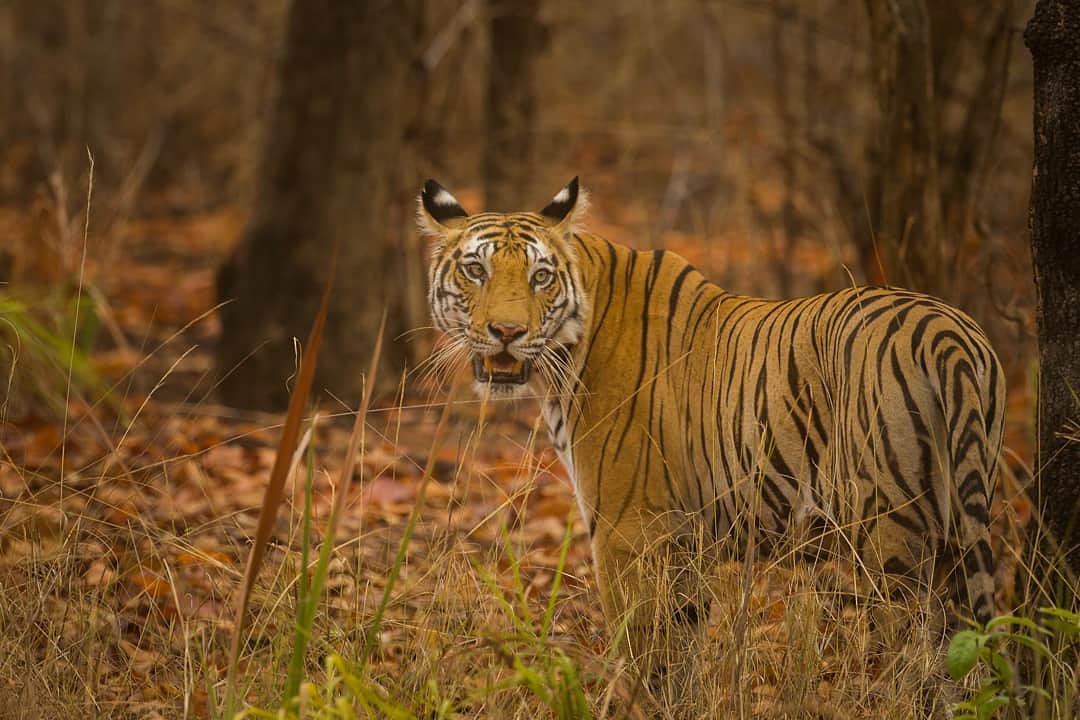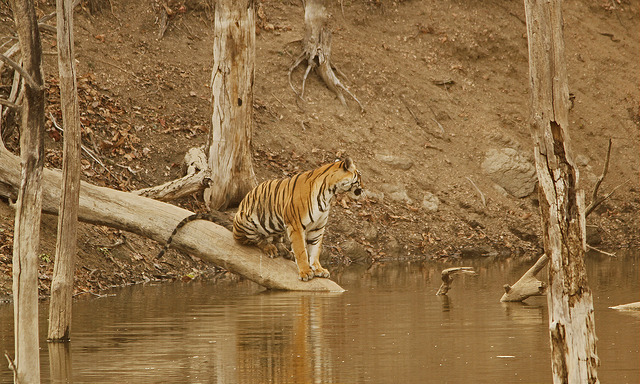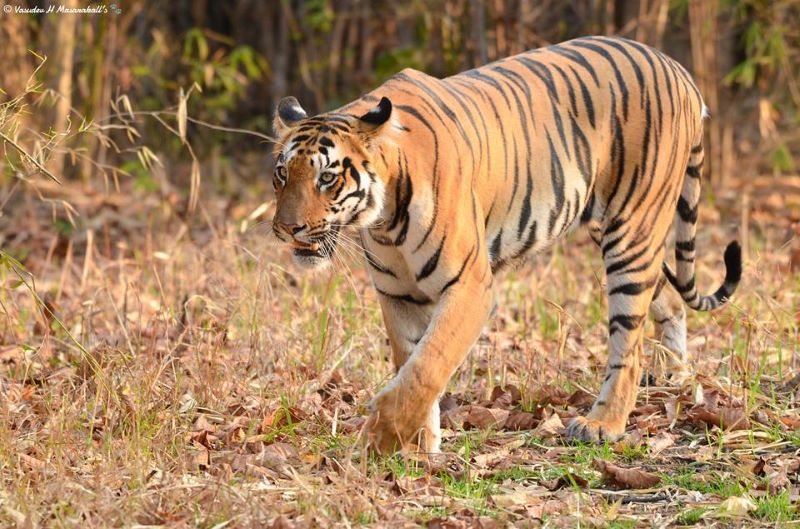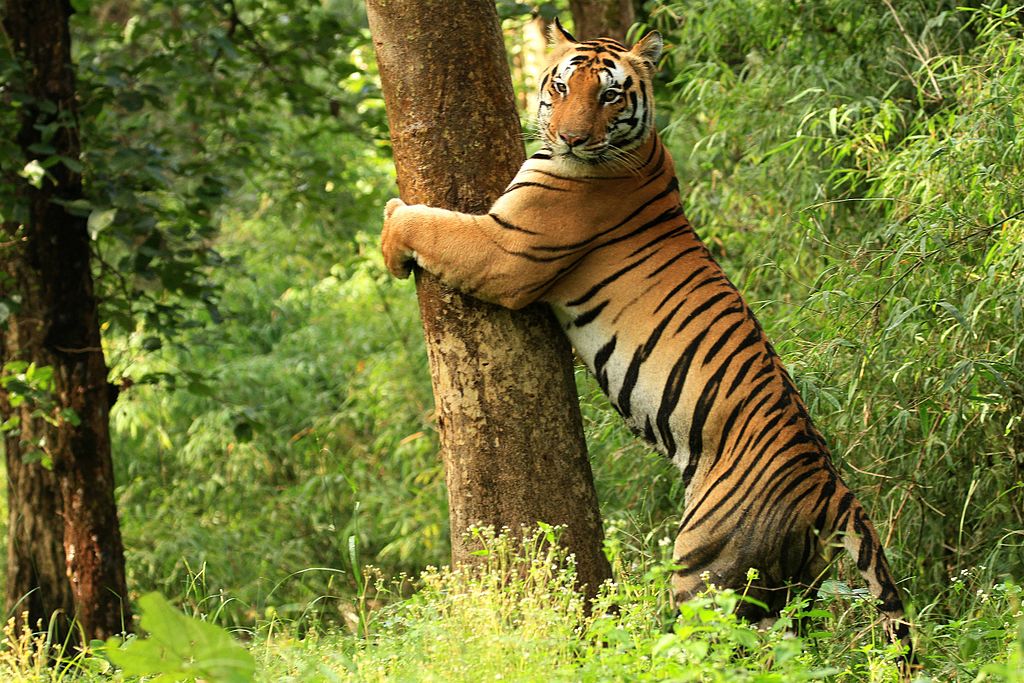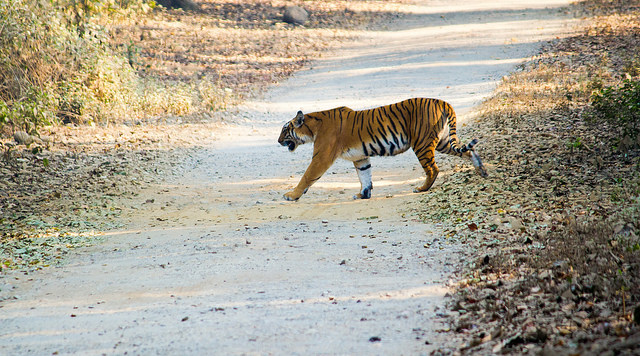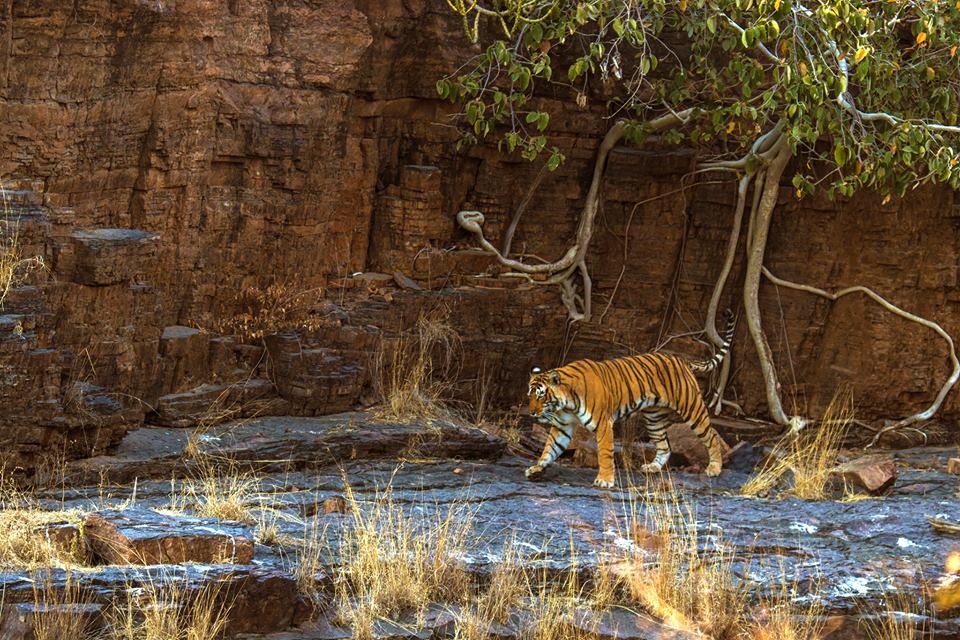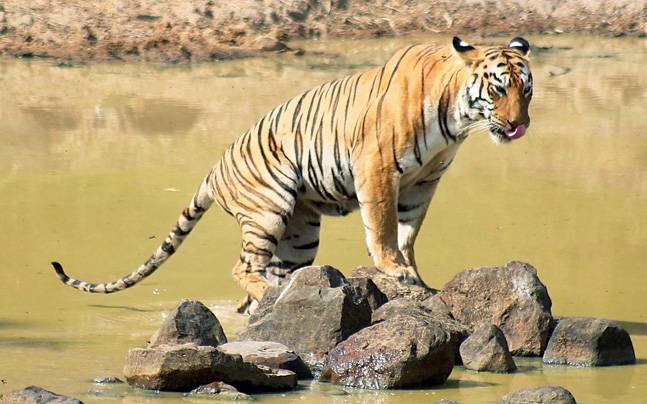Panna National Park
Panna Tiger Reserve
Panna Tiger Reserve, or the Panna National Park, as it is popularly known, is located in the Panna and Chattarpur district of Madhya Pradesh. Standing over an area of 542 sq. km, Panna is India’s 22nd Tiger Reserve and fifth in Madhya Pradesh. Panna Tiger Reserve lies right beside the Ken River flowing through central India. It is merely 57 KMs away from Khajuraho, the world heritage center renowned for its sculptures.
Panna Tiger Reserve was bestowed with the Award of Excellence in the year 2007. This honor came after the Ministry of Tourism of India found that the Tiger Reserve was managed and maintained most efficiently among all national parks of the country. This accolade has contributed much to increasing tourist inflow into Panna.
Regular visitors, people from surrounding areas and the reserve staff accredit Mr. R. Shreenivasa Murthy, the then forest officer of the area for this incredible feat. Afterall, the park received national honour under his leadership.
The Ken River flowing right through the middle of the reserve not only adds to the cool serene vibe but also creates some stunning waterfalls on its journey to falling in the valley. Numerous sights of historical significance exist within the reserve area. Here, you can catch a glimpse of human civilization as old as from the Neolithic age.
Tall standing deciduous trees are permanent denizens of the reserve. They make this place a safe habitat for not only the Indian tigers and leopards but also several other small wild animals such as the chital, chinkara, sloth bear, nilgai, etc. You can say that The park has something of great value for all the nature lovers, wildlife enthusiasts, and history geeks.
Interesting Fact – Panna
The first male tiger -T3, who was brought here from Panna, didn’t like it initially. So he went back to Panna on his own. However, after a month he was transferred back here. And this time he stayed here forever.
Prime Predators
Big Cats like Bengal Tigers, Indian Leopards, and Caracals are on the top of the food chain in Panna Tiger Reserve
Famous For?
Panna is famous for Tiger T 3, Tigress T1, and T2.
Major Wildlife
Tiger, Leopard, Caracal, Sloth Bears, Cheetals, Chinkara, Nilgai, Blossom Headed Parakeet and Hawk-Eagle
Flora & Fauna in the Park
Forest Cover: The dry and hot climate of Panna has given rise to dry Teak and dry mixed forest that grows amply and suitably on the shallow Vindhyan soils. Miscellaneous dry deciduous forest interspersed with grassland areas dominates the vegetation cover. Open grasslands, open woodlands, and a riverine with tall grass blades are also present.
Mammals: Panna tiger reserve is the most well-managed, well-kept, naturally suitable, and an ideal home to diverse wildlife varieties. There exist many different kinds of flora and fauna here including sloth bears, cheetals, chinkara, nilgai, and vultures.
Panna is the residence of the most majestic of big cats – the Royal Bengal Tigers (Panther Tigris) and his fellow leopards (Panthera pardus). You can also find hyena, caracal, and some other smaller members of the cat family here.
Birds: Panna skies are home ground to around 200 varieties of feathered beings, including the migratory ones. You can meet species like a honey buzzard, king vulture, blossom-headed parakeet, and hawk-eagle. Their chirping and antics add to the playful atmosphere of the reserve.
Reptiles: Panna’s list of flaunt-worthy inhabitants also includes many snake varieties including the great Indian python.
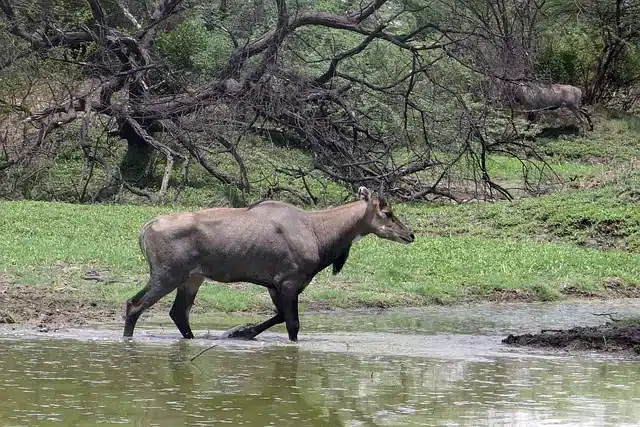
Mammals
- Royal Bengal Tiger
- Indian Leopard
- Cheetals
- Chinkara
- Nilgai
- Sloth Bears
- Hyena
- Jackal
- Civet Cat
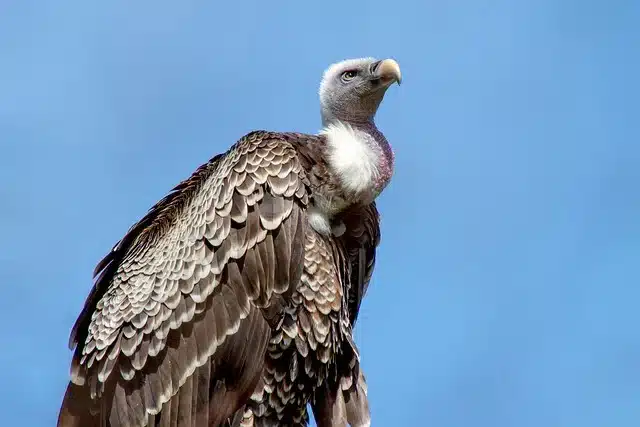
Birds
- Crested Honey Buzzard
- King Vulture
- Blossom-Headed Parakeet
- Hawk-Eagle
- Bar-Headed Goose
- Red Headed Vulture
- Indian Vulture
- Scimitar Babbler
- Paradise Flycatcher
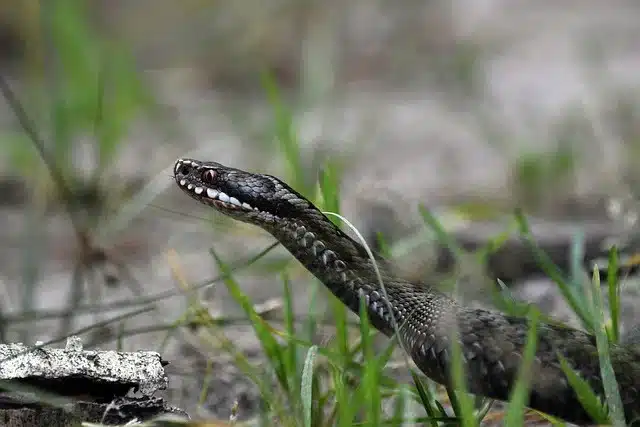
Reptiles
- Indian Cobra
- Indian Tent Turtle
- Oriental Rat Snake
- Bengal Monitor
- Oriental Garden Lizard
- Common Skittering Frog
- Mugger Crocodile
- Narrow-Headed Softshell
- Three-Striped Roof Turtle
Safari in Panna National Park
Panna offers an amazing safari experience twice a day in the two major tourist entry zones – Madla and Hinouta
Panna welcomes tourists between 16th October and 30th June every year. It remains closed during the monsoon season from July to September.
To make the tour experience worthy and memorable, the jungle authorities provide jeep facilities for touring around and catching glimpses of Panna denizens.
You can also take a look at the aquatic creatures and other reptiles near the lake on a boat ride which usually lasts for an hour.
The Elephant Safari is another tempting option available. You can hitch a ride on the elephant’s back and tour around the place to meet wild members of the Panna family from close quarters.
If you happen to be of the highly adventurous kind, Night Safari awaits you in the Gangau region for a challenging and adrenaline-inducing trip.
Panna National Park/ Tiger Reserve is easily reachable from NH 44 highway.
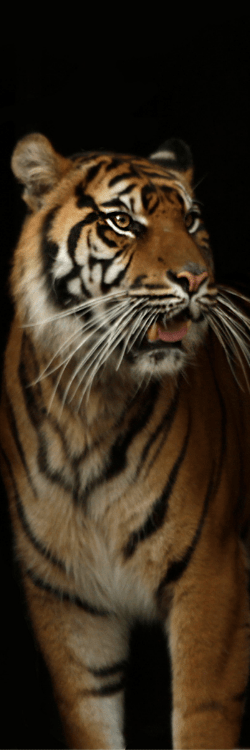
Panna Safari Tours
Panna Budget Safari
Panna is an excellent place to have a lot of fun on a budget. We have put up a budget-friendly safari package for you, which includes four days and three nights in the park.
Panna Weekend Safari
We also provide weekend safari packages for those who do not wish to disrupt their job schedule. Two Tiger Safaris are conducted in Panna that will make your weekend amazing.
Safari Zones or Gates
There are two core and one buffer zone in the Panna tiger reserve. Core zones are Madla and Hinouta. The buffer zone is Harsha. There are also two buffer gates – Akola and Khajurikudar.
Madla Core Zone
Madla zone is the oldest core zone in Panna. It offers amazing wildlife to see. You can even go for a boat safari which happens on the kin river.
Hinauta Core Zone
This zone also offers the Bengal tiger spotting opportunities. This zone is also famous for spotting Indian Leopards and sloth bears. Besides, this zone is also famous for watefalls.
Harsha Gate – Buffer Zone
It is a buffer zone famous for night safari that starts at 6.30 pm and ends at 9.30 pm. The gate opens up to the area consisting of amazing nocturnal animals.
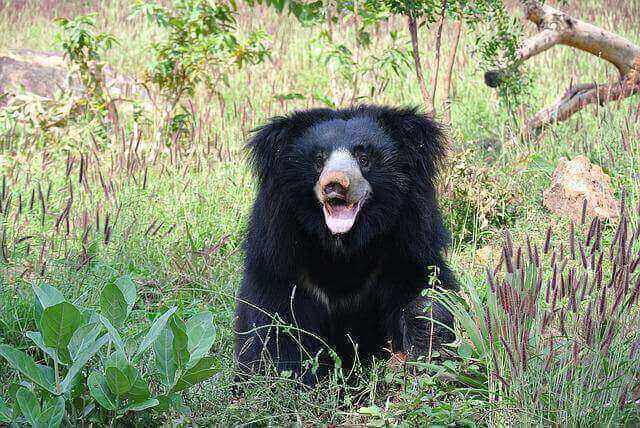
Core Zone
Zone Name |
Entry Gate |
|---|---|
|
Madla
|
Madla
|
|
Hinouta
|
Hinouta
|
|
Akola Core Zone
|
Akola
|
Buffer Zone
Zone Name |
Entry Gate |
|---|---|
|
Jhinna
|
Jhinna
|
|
Harsha
|
Harsha
|
|
Khajurikudar
|
Khajurikudar
|
|
Akola
|
Akola
|
How to book Safari in Panna Tiger Reserve
To book an end-to-end safari package in Panna National Park including airport transfer, accommodation, meals, and internal transfer, you may contact Big Cats India, or schedule a free discussion with our experts to understand the best safari zone to book, based on your area of interest.
It is advised to plan your safari well in advance to get the best zones for sightings. If you are not sure which gate(s) to choose from, you can contact Big Cats India or message us for any assistance to book your safari in Panna.
You can also book Panna Safari online from mahaecotourism and mp tourism website. However, these websites only book your safari permits, not the jeep, accommodation, food and internal transfer to the reserve gates.
Open Jeep Safari
Open Jeep Safari is easily available in all the zones of Panna Tiger Reserve, but you will have to plan the safari in Advance. to get the permit availability of the desired Gate for better Big Cats sighting.
Canter Safari
Madla zone is famous for Canter Safari. However, It is only recommended to go for Canter Safari if you do not have the permit available for the Open Jeep Safari.
Tiger Safari Timings in Panna Tiger Reserve
In Panna, morning safaris usually start between 5:30 and 6:30 AM, lasting a few hours when the forest is cool and animals are active. Evening safaris kick off around 3:00 to 3:30 PM and wrap up just before sunset—great for spotting wildlife in soft, golden light. Keep in mind, Wednesday evening safaris are closed, and the park stays shut during the monsoon months from July to September.
Weather in Panna
Panna National Park experiences diverse weather throughout the year. January and February are cool and dry, with temperatures ranging from 7°C to 25°C (45°F to 77°F).
March to June brings the summer heat, with temperatures rising between 25°C to 42°C (77°F to 108°F).
The monsoon season, from July to September, brings moderate to heavy rainfall, transforming the landscape into a lush green haven.
Post-monsoon (October to November) offers pleasant weather, with temperatures ranging from 15°C to 32°C (59°F to 90°F).
December brings cool and dry conditions, with temperatures between 7°C to 25°C (45°F to 77°F).
Each season in Panna National Park provides a unique atmosphere for wildlife enthusiasts, showcasing the adaptive beauty of the region’s ecosystem.
| Month | Jan | Feb | Mar | Apr | May | Jun | Jul | Aug | Sep | Oct | Nov | Dec |
| Min(°C) | 1 | 10 | 22 | 30 | 35 | 25 | 20 | 19 | 19 | 12 | 6 | 3 |
| Max(°C) | 15 | 25 | 35 | 40 | 42 | 41 | 34 | 30 | 31 | 29 | 27 | 25 |
| Month | Min(°C) | Max(°C) |
| Jan | 1 | 15 |
| Feb | 10 | 25 |
| Mar | 22 | 35 |
| Apr | 30 | 40 |
| May | 35 | 42 |
| Jun | 25 | 41 |
| Jul | 20 | 34 |
| Aug | 19 | 30 |
| Sep | 19 | 31 |
| Oct | 12 | 29 |
| Nov | 6 | 27 |
| Dec | 3 | 25 |
Panna in Winters
Panna becomes the most attractive national park in central India during the winter season (November – February) due to its eye-pleasing lush vegetation and deep forests.
Panna in Summers
Summer (mid-March to June) is the best time to visit Panna Tiger Reserve. In this season, there is a greater likelihood of encountering tigers near water resources. In addition, as the trees and foliage dry up in the summer, spotting tigers get simpler.
Panna in Monsoon
Usually, most of the national parks are closed for tourism during monsoon in India, but Panna buffer remains open for Safari during monsoon.
Best time to spot tigers at Panna National Park
As a tiger fan, you must be aware that sighting a tiger requires a great deal of patience. Finding a tiger in the jungle can take hours or perhaps many rides. It is an adventurous challenge. Winter is the season that will be more challenging and therefore more thrilling. Whereas, summer is the season where you have higher chances of spotting the tigers near the river.
Recommended Tour
Panna National Park
WhatsApp now to enquire or block your seat
How to Reach the Park
By Air
Khajuraho airport is the nearest landmark for air travel. It is 45 km away from the tiger reserve.
By Road
Panna is linked to Bhopal by NH 86, which passes through Chhatarpur and NH 75. The forest is served by regular bus routes. It can also be reached from Gwalior. The National Park is a direct trip down Jhansi through NH 78 and Chhatarpur.
By Rail
Panna Tiger Reserve is accessible via the Khajuraho railway station, which is located 40 kilometers away. Another rail head near Panna is Jhansi.
| From | By Air+Road (Hrs) | By Road | By Rail+Road (Hrs) |
|---|---|---|---|
| New Delhi | 1.5 Air + 4.00 Road | 13.5 Hrs | 14.5 Rail + 1.00 Road |
| Nagpur | 8.00 Air + 1.00 Road | 7.00 Hrs |
11.30 Rail + 1.00 Road |
| Mumbai | 1.30 Air + 3.00 Road | 17.00 Hrs | 18.00 Rail + 1 Road |
| Bangaluru | 7.30 + Air + 1.30 Road | 26.30 Hrs | 32.00 Rail + 1.00 Road |
| Kolkata | 5.30 Air + 1.00 Road | 15.00 Hrs | 17.00 Rail + 7.00 Road |
| Jabalpur | NA | 3.00 Hrs | 2.30 Rail + 1.30 Road |
| Agra | 4.5 Air + 1.5 Road | 6.00 Hrs | 8.30 Rail + 0.30 Road |
| Ahmedabad | 5.00 Air + 0.30 Road | 14.00 Hrs | 24.30 Rail + 0.30 Road |
| Pune | 2.00 Air + 1.00 Road | 16.30 Hrs | 23.00 Rail + 3.30 Road |
| Khajuraho (Nearest Airport & Rail) | NA | 1.00 Hr | NA |
| Chatarpur | NA | 1.00 Hr | NA |
| From | Time to arrive |
|---|---|
| Kanha TR | 7.30 Hours |
| Bandhavgarh TR | 3 Hours |
| Tadoba TR | 10 Hours |
| Umred Karhandla | 8 Hours |
| Corbett TR | 4.30 Hrs Air + 2.30 Hrs Road |
| Tipeshwar WLS | 10 Hours |
| Pench TR | 6.30 Hours |
Things you should carry with you
Essential things to carry for your Panna Tiger Safari
Your DSLR or Camera to capture your memorable safari moment.
Binoculars to view the wildlife from a safe distance.
Plenty of water to keep you dehydrated on a sunny day.
Hat & Shades to protect from direct sunlight.
Bandanna or Cotton Scarf to cover your face and avoid dust.
Winter wear or jacket if you are doing safari during winters. It really gets cold very quickly after sunsets in Jungle.
Rain Cover to save you and your gears from water during rain.
Panna can get really colder very quickly in the evening so consider carrying woolens in the afternoon safari in Panna during winters season

Some History of Panna Tiger Reserve
Panna National Park was officially established in the year 1981. The Government placed it under the umbrella campaign of Project Tiger in 1994. That’s when it became the 22nd Tiger Reserve in the country. Gangau Wildlife Sanctuary which saw its official creation in 1975 was also added to the reserve area.
The forests of Panna used to be hunting retreats of the erstwhile rulers of the Panna, Chhatarpur, and Bijawar princely states. Today, the same forests are instrumental in the protection and preservation of nature and wildlife.
The year 2008 brought on what was to be a dismal state and poor reputation for Panna. The reserve lost all its tigers to poaching. It was saddening news to wildlife enthusiasts and tiger lovers everywhere. Six years ago, there had been more than forty tigers sprawling around in the reserve.
To restore Panna Tiger Reserve to its former glory, a tiger relocation program was brought into execution.
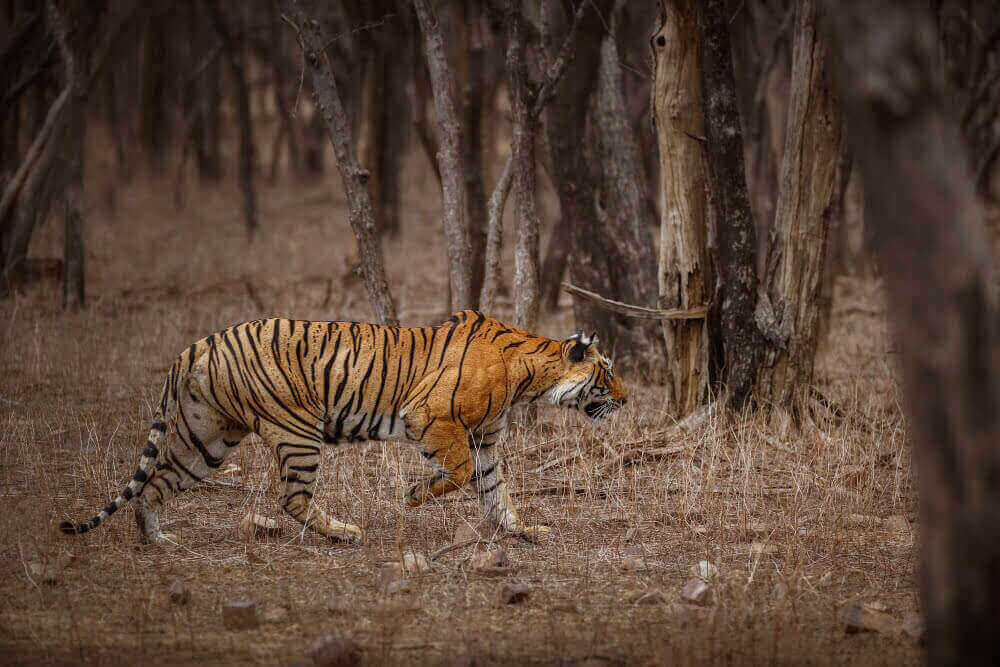
Under this effort, two tigresses(T1, T2), and a male tiger(T3) were translocated to Panna. The tigresses came from Bandhavgarh and Kanha National Parks while the male was resident of Pench Tiger Reserve.
These efforts came to a sudden halt when the male tiger T3 began displaying homing instincts and sauntered back towards Pench. It steadily moved back to its home crossing multiple human dominated landscapes though no conflict was ever reported. T3 was brought back to Panna after a month of tracking and following. On its second visit, the tiger settled well, established territory, and began mating. Four new cubs arrived in April 2010. The tiger population has been on a steady rise ever since.
Why Visit Panna?
Panna Tiger Reserve has everything a tiger safari enthusiast would want. It has beautiful tigers to view. You will also be able to witness wildlife while on a boat. A tiger reserve is a great place for wildlife photographers as it offers to click pictures of Bengal Tigers, Indian leopards, Sloth Bears, Cheetals, Chinkara, Nilgai, Caracal, etc. It is also a pleasant destination for bird lovers as well because around 200 varieties of bird species (including the migratory birds) are found here. Their chirping and antics add to the playful atmosphere of the reserve.
Panna General Info Card
- Total Area: 758 Sq. Km
- Location: Chhindwara & Seoni District
- Notified as National Park: 1981
- Notified as Tiger Reserve: 1994
- Nearest Airport: Khajuraho Airport (1 Hour)
- Nearest Railway Junction: Khajuraho (1 Hour)
Panna Wildlife Info Card
- Carnivorous: Tiger, Leopard, Caracal, Hyena
- Herbivorous: Sambhar, Chital, Chinkara.
- Omnivorous: Sloth Bear, Palm Civet, Mongooses.
- Birds: 200 Species of Birds.
Panna Tour Info Card
- Ideal Tour Length: 3N4D or 6 Safaris
- Can extend with: Kanha, Pench, Bandhavgarh
- Tour Starting points: Nagpur, Delhi, Mumbai
- Is tour Customizable?: Yes
- Safari Options: Open Jeep, Canter

